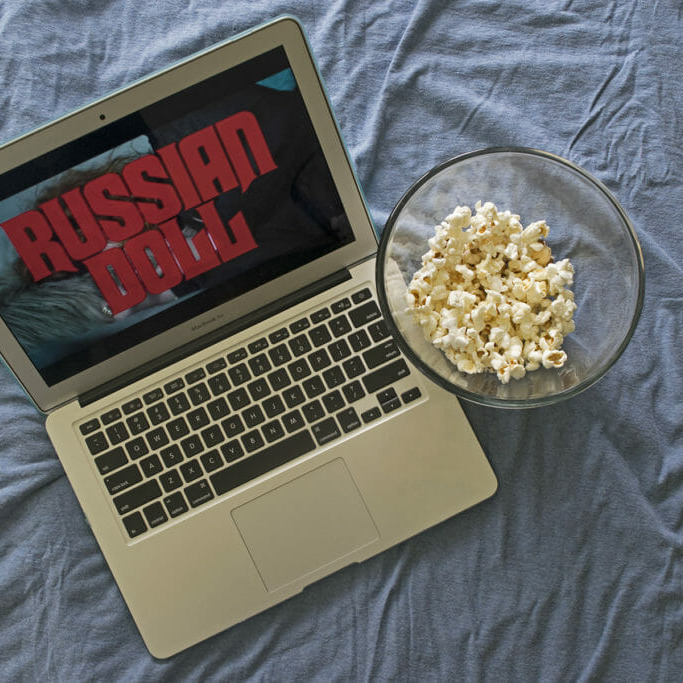
The never-ending use of the time loop
How Russian Doll reimagines an overused premise
Editor’s Note: This article contains spoilers for the Netflix original Russian Doll.
In the new Netflix series Russian Doll, protagonist Nadia (Natasha Lyonne) relives the day of her 36th birthday over and over again.
It may sound unoriginal, but Russian Doll does something completely new with this overused premise.
The time loop plot device has been used in countless Hollywood films and TV episodes. The basic idea is that a character repeatedly relives the same period of time, usually breaking the cycle after finding some solution that has to do with saving the world or self-growth.
The most famous time loop film is largely considered to be the 1993 comedy Groundhog Day, starring Bill Murray as a crabby weatherman who continuously relives the titular day. Other more recent uses of the premise include Source Code (2011), Before I Fall (2017), Happy Death Day (2017), and its sequel, Happy Death Day 2U (2019).
In Russian Doll, when Nadia finally accepts what’s happening to her, she immediately gets to work trying to figure out why it’s happening and how she stops it. Things get even stranger when she discovers that someone else is going through the same experience as her. He’s a stranger named Alan who is connected to Nadia’s life by only one brief encounter –– or so she thinks at first.
Old, and new, time loops
So, how does Russian Doll compare to other time loop films? Although it certainly works as a comedy, the show reimagines things in a slightly darker way than movies like Groundhog Day. Rather than going to sleep and waking up on the same day like Bill Murray’s weatherman character, Nadia must die to restart her cycle. This isn’t a completely new idea though, Before I Fall includes times where the protagonist dies to restart her cycle.
Time loops begin differently depending on the lesson it is trying to teach. In Groundhog Day, where Bill Murray’s Phil just needs to stop being a complete asshole to end his loop. In Source Code, Jake Gyllenhaal’s character needs to find the culprit of a train bombing to stop the cycle. In Happy Death Day, protagonist Tree’s way out is to identify and kill her murderer.
In Russian Doll, there isn’t one easy answer, and there’s no clear cause for the loop. But the exact reason for their situation isn’t as important as what Nadia and Alan need to learn to get out of it.
There are elements of this show that are similar to other time loop films. Like Groundhog Day, the series still deals with the ideas of self-improvement and helping others around you. But it takes these themes to another level. Nadia and Alan aren’t going through things by themselves. They explicitly talk about their dilemma, unlike other time loop films where the protagonist is often trying to solve the conflict internally.
It gives the viewer an inside look at challenging the time loop’s existence, especially from Nadia’s more scientific approach at times.
Smoke, mirrors and life lessons
With all the mirror imagery throughout the show, it’s undeniable that a major theme is self-reflection. But it’s not about them suddenly learning to become morally good people. Nadia and Alan need to come to terms with their inner demons before trying to help each other.
Nadia needs to let go of her guilt around her mother’s death. Alan needs to realize that he is worthy of love and one break-up doesn’t contradict that point. They also realize they can’t learn any of this without each other’s help.
Sometimes time loops can annoy viewers. The creators of Russian Doll, however, have added interesting elements that keep people at home watching into the next episode. The story evolves and changes with every loop with things and people going missing every time the loop restarts. The main character also makes new discoveries about events that happened the night of their deaths and must decide whether or not to stop them. It’s not just the obvious forefront storyline, but hidden Easter eggs in the plot to keep viewers on their toes.
What is it about the time loop that is so alluring to audiences? Is it the idea of getting infinite chances to make things right with all the people you’ve ever wronged? The chance to say the perfect line to someone you fumbled your words with? Regardless of why, this premise has and will continue to bring in viewers for years to come. Based on how popular it has been in recent years, it probably won’t be long until someone else uses it in a completely different light.






